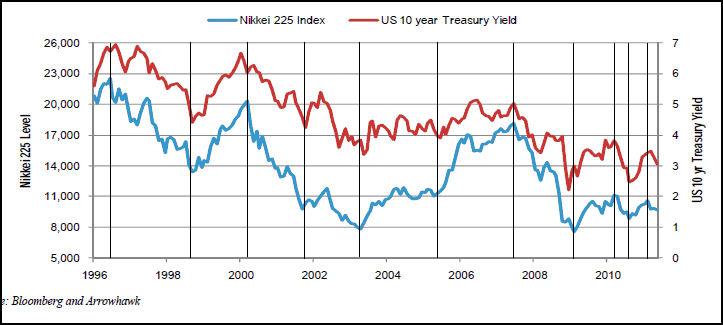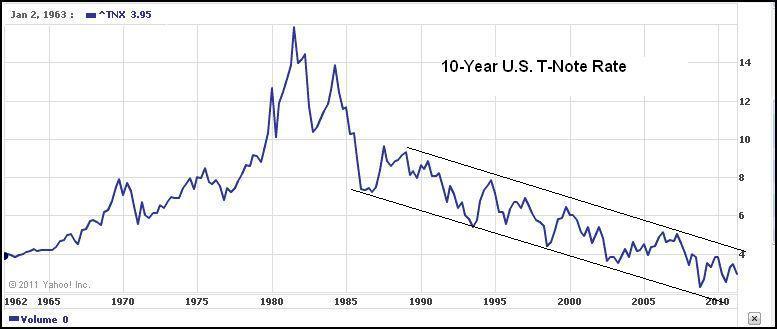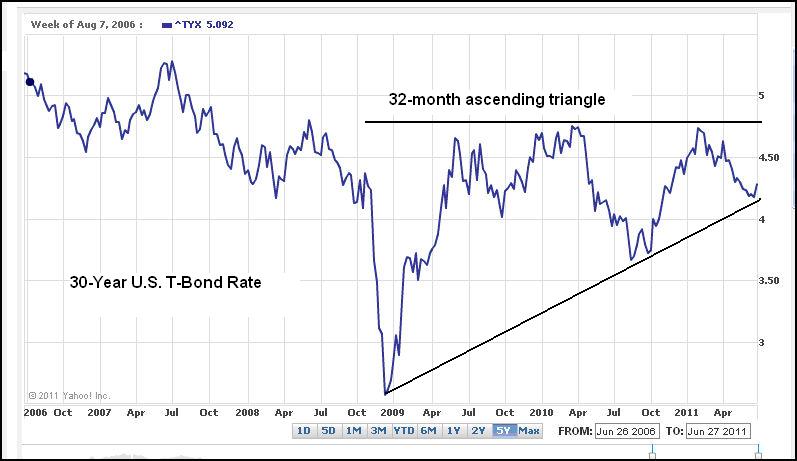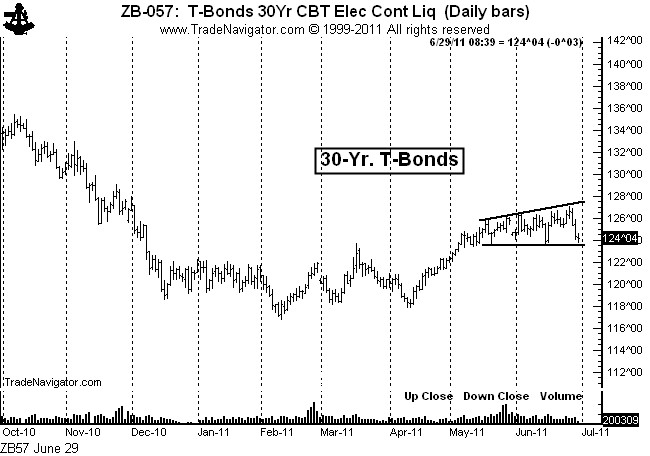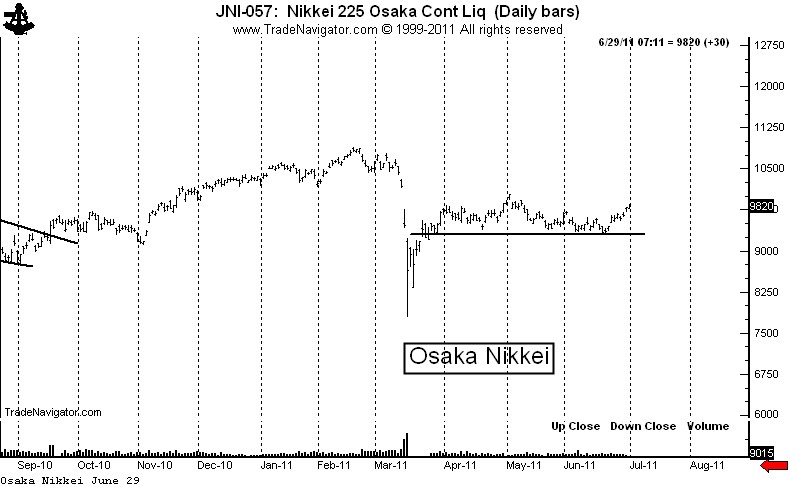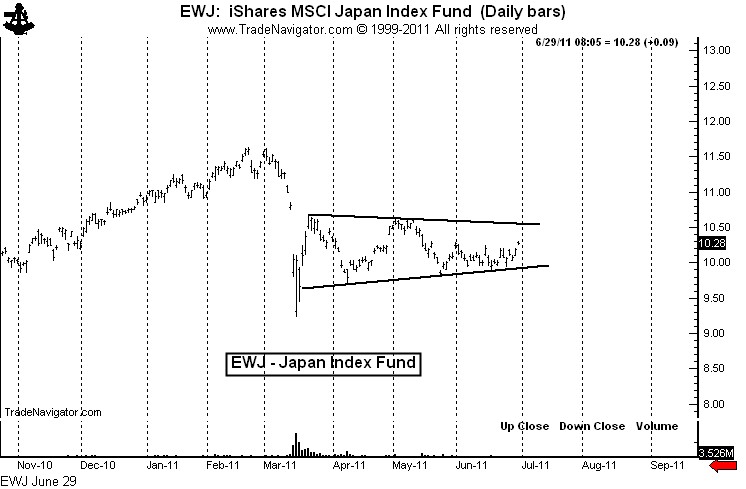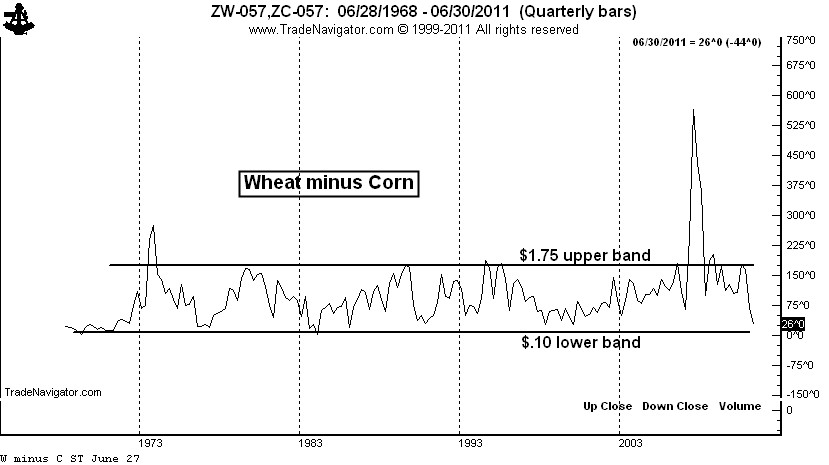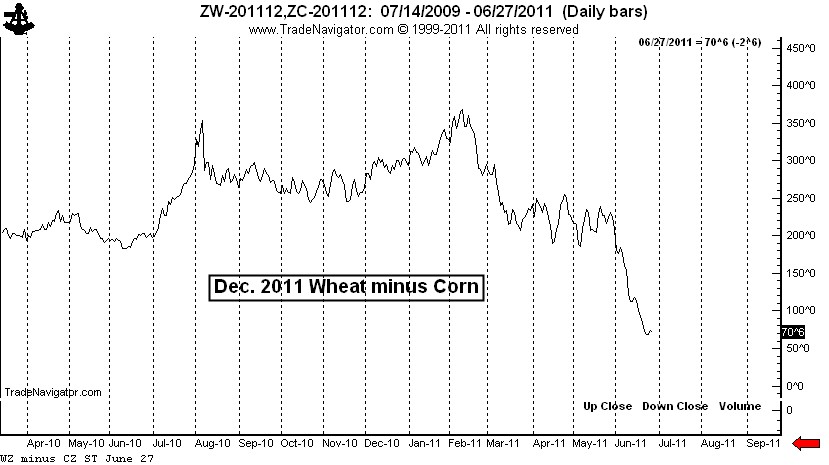The Public Blog site
Three chart patterns to watch this week — Gold, Soybeans and EURUSD
/by Peter BrandtSoybeans — Ready for second stage launch?
/by Peter Brandt$EURUSD at a critical juncture
/by Peter BrandtNikkei 225 and 10-Yr. U.S. Note Rates — Go Together Like a Horse and Carriage
/by Peter Brandt When the timing is right, going long Japanese stocks and short T-Notes (prices) will be quite a ride
When the timing is right, going long Japanese stocks and short T-Notes (prices) will be quite a ride
As a technical chart trader I look for price patterns that repeat themselves in different markets in different time periods. I also look for simiilar patterns in different (often unrelated) markets at the same time.
This later condition is exactly what we see during the last 15-1/2 years in the price action of the Nikkei 225 and U.S. 10-Year T-Note yields. The mirror image nature of the peaks and valleys in these markets is too similar to ignore, as seen below. I am sure those of you who are macro-economists can explain why these two markets are joined at the hip.
The above chart indicates that a bullish Japanese stock market play will work like a bearish U.S. T-Note play (short price, long yield) — that both sides of a long Japanese stock market and short T-Note price hedge could make money. The question is: Do the charts indicate the timing is right to probe this play? The answer is yes!
The chart below shows that the yield of the 10-Year T-Notes has been in a declining yield trend since the early 1980s. The chart displays a 24-year channel.
The 30-Year T-Bond yield chart (below) shows a possible 32-month ascending triangle. Keep in mind that a bear position on Bond prices is equal to a bull position on Bond yields. An advance by yields above 4.85% would decisively complete this triangle and establish a yield target of 6.8%. There is a chance that the June 2011 yield low of 4.17% is the final low of this chart configuration.
A chart of the CBOT Bond futures, $ZB_F, (reflecting Bond prices) is shown below. Note that this chart displays a possible right-angled broadening pattern. A close below 123-10 would complete this top.
In the meanwhile, the Nikkei 225 futures chart ($JNI_F) shows a line of strong support at 9300. If this level does not hold, then the March “earthquake-” event low could be tested.
Position traders have very well defined risk points for being short Bonds prices and long the Nikkei 225. This position can be established using futures (Board of Trade for Bonds and Osaka for the Nikkei) or with a number of ETF combinations. The ETF alternatives are
- Long $EWJ (Japan Index) – see chart below
- Long $SCJ (Japan small cap)
- Watch for a new Nikkei ETF being filed by Maxis (symbol not yet available)
- Long $TMV, a 3X ultra bear Bond ETF
- Long $TBT, an ultra bear 20+ year Bond ETF
- Short $TMF, a 3X long 30-year Bond ETF
- Long $TBF, a short 20+ year Bond ETF
- Short $TLT, a long 20+ year Bond ETF
I prefer being short the ultra-long ETFs to being long the ultra-shorts because of the time decay factor of the ultra ETFs.
Markets: $ZB_F, $EWJ, $TMF, $TBF, $TLT, $TMV, $TBT
Disclaimer: I am a technical chartist and do not take into consideration fundamental or macro-economic factors.
###
Silver — on its way to $20
/by Peter BrandtPrice pattern today almost a perfect image of 1980
The chart below overlays the Silver today with the Silver price in 1980. The time framing and price scales are not identifical. It is the price pattern itself that is important.
Based on the price pattern, Silver today is following the script of 1980 with uncanny accuracy. And, based on the similarily of the patterns, Silver is headed to $20 to $25, probably by the end of the year.
Yet, a survey released Monday by Bloomberg indicated that the median expectation of 100 commodity analysts is for Silver to rally back to $49.79 by December 31.
I will trust history rather than the commodity analysts.
Markets: $SIL, $SI_F, $SLV
###
Wheat vs. Corn spread coming off of historic lows
/by Peter BrandtSpread will eventually return to $1.75 premium Wheat
On June 9, the Wheat vs. Corn spread made a new all-time historic low of 40 cents premium Corn. This broke the previous low of 11 cents premium Corn from November 1983. Over the years the lower band in the spread has been around 10 cents premium Wheat, as shown below.
The spread has rallied sharply from the June 9 low and is now about 23 cents premium Wheat. I think it is a fair assumption to say the spread will NOT retest the June low. Unfortunately the forward spreads accept this reality. The December 2011 spread is at about 70 cents premium Wheat. Just four months ago this spread closed at $3.68 premium Wheat.
Tightness in Corn could continue throughout the growing season and this could drive the December 2011 spread toward 40 cents premium Wheat. The new crop spread should be bought in this area. Historically the Wheat vs. Corn spread will return to about $1.75 premium Wheat within a year or two after trading near parity.
Markets: $ZW_F $ZC_F
###

